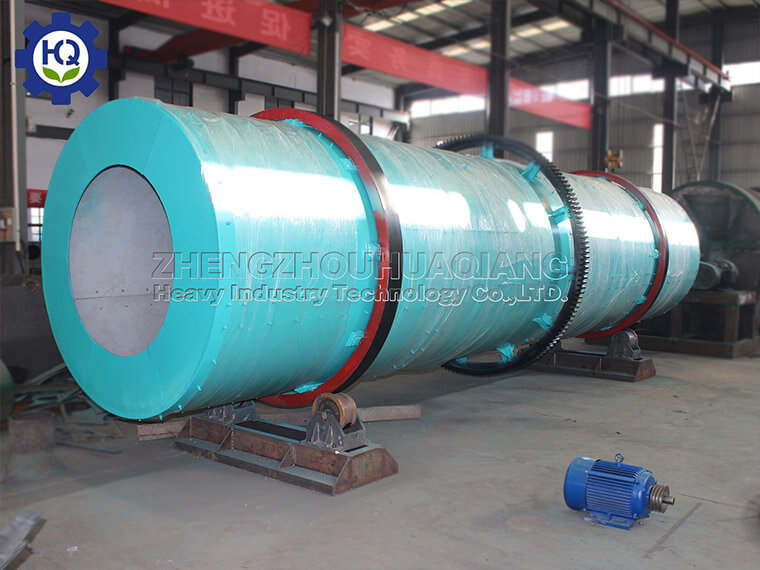Process flow of the organic fertilizer production line equipment for processing 20000 tons of granular chicken manure annually:
Mix chicken manure, straw, mushroom residue and other materials together, add fermentation agents, and under the action of the fermentation agents, the material pile will generally heat up in about 2 days. At this time, organic fertilizer flipping equipment can be used to flip the pile to increase its oxygen content and increase its moisture content. If local environmental protection is strict, horizontal fermentation tanks can be used for fermentation. The fermentation process in horizontal fermentation tanks is fully sealed and contains deodorization devices, which will not cause environmental pollution.
Raw material fermentation: carried out in the fermentation workshop, using high temperature (55-65 ℃) fermentation to kill pathogenic bacteria and weed seeds in pig manure, humify organic matter, and make nutrients easily absorbed by crops..jpg)
Raw material computer belt scale automatic batching: Mix fermented pig manure and other raw materials in a certain proportion.
Crushing and mixing: Crush the ingredients and mix them evenly.
Disc granulation, drum granulation, and extrusion granulation: The crushed raw materials can be granulated using methods such as disc granulation machine, drum granulation machine, or extrusion granulation machine.
Organic fertilizer dryer for drying organic fertilizer particles: Dry the prepared particles to remove moisture.
Cooling machine for organic fertilizer particles: Cool the hot organic fertilizer particles for the next step of screening and packaging.
Screening machine screens out qualified organic fertilizer particles: The cooled organic fertilizer particles are screened to select qualified organic fertilizer products.
Coating machine for smoother coating particles: Apply coating treatment to qualified organic fertilizer particles to make their surface smoother.
Packaging scale automatic filling of organic fertilizer particles: Pack the coated organic fertilizer particles and seal them with packaging bags.
The price of organic fertilizer production line equipment for processing 20000 tons of granular chicken manure per year may vary depending on different manufacturers and models. It is recommended to consult relevant manufacturers or professionals to understand the specific price and equipment configuration. At the same time, it is necessary to consider factors such as equipment production capacity, quality, maintenance costs, and lifespan, and comprehensively evaluate the return on investment.
.jpg)

.jpg)


.jpg)


